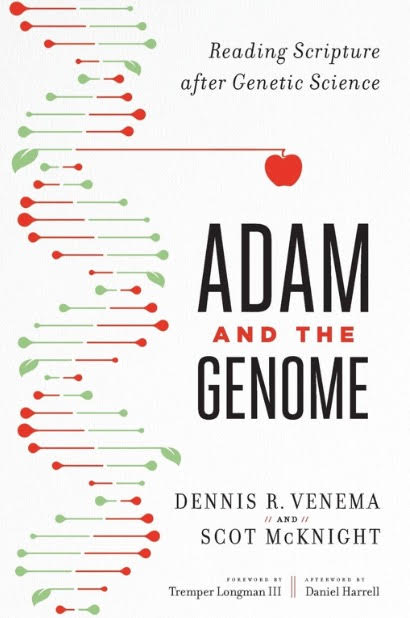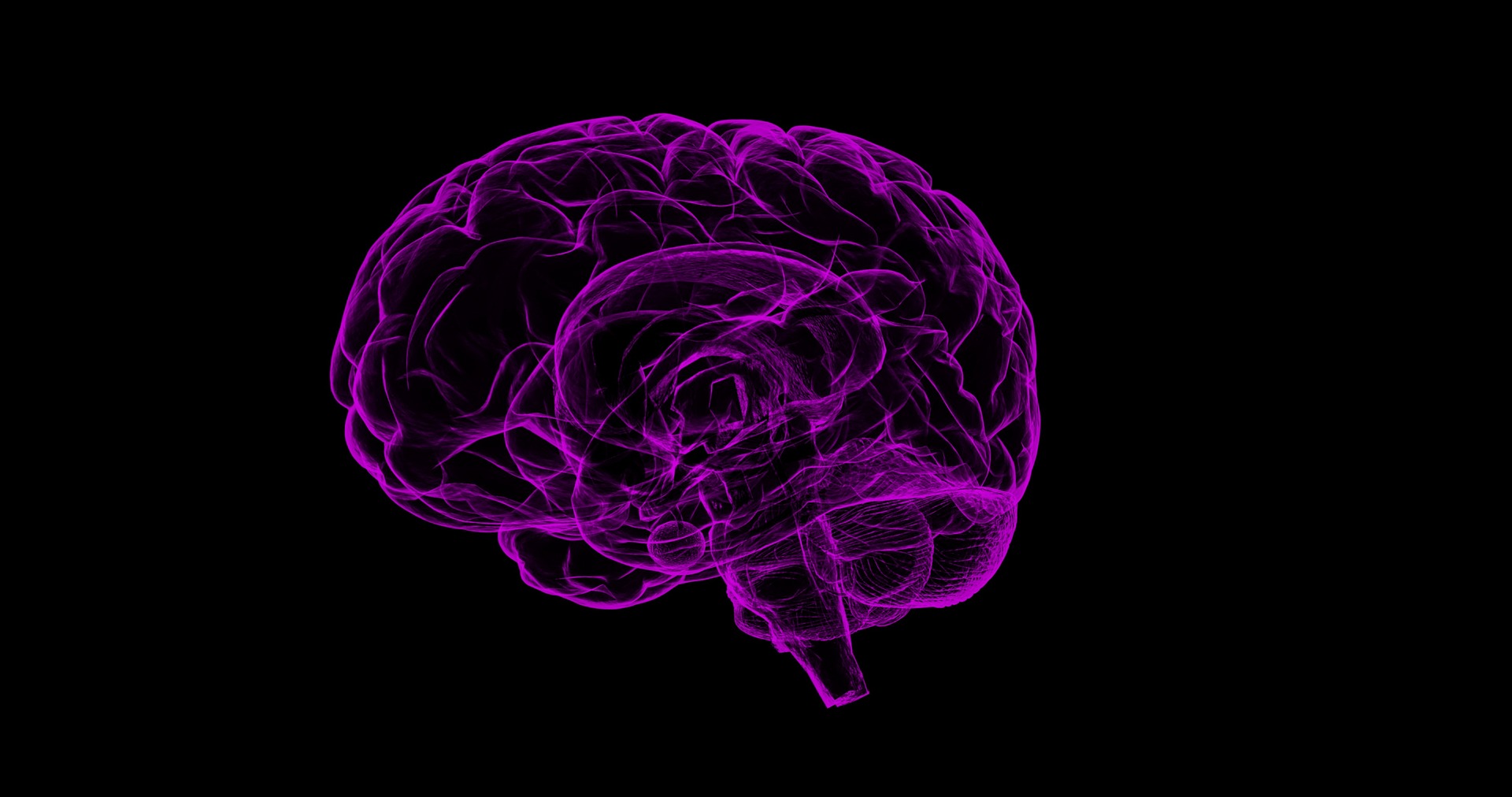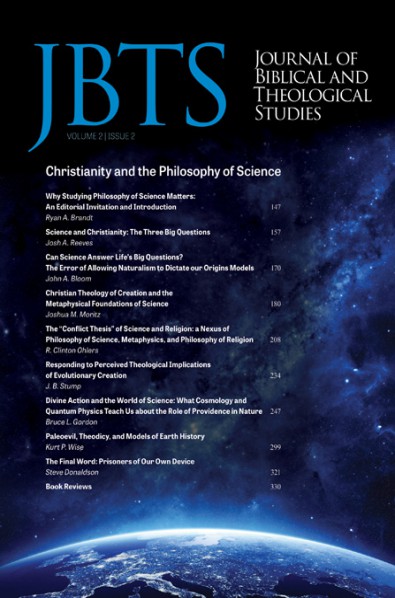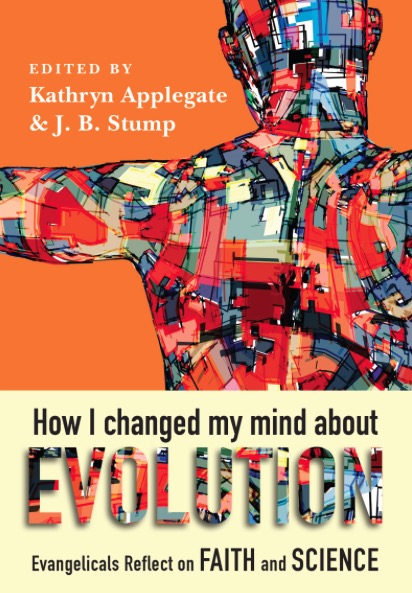


Do we have a ‘God Spot’? Is our Faith determined by our brain architecture?
Andrew Wood
Andrew Wood is a biophysicist who is currently with the School of Health Sciences at Swinburne University in Melbourne. He has taught many aspects of Biomedical Instrumentation over many years. He worships at St Stephen’s Anglican Church in Greythorn, North Balwyn.
Abstract
This paper sets out to explore the question of whether religious faith is biologically determined and hence whether some can claim innate factors as a valid reason not to be responsive to evangelistic appeals. There are a number of aspects of this: the perception that religion runs in families; that certain personality types predispose towards or away from religion; that the scepticism which is characteristic of scientific method would imply that scientists are less likely to be religious. Another aspect is whether a distinction can be drawn between ‘being religious’ (with a focus on experiences) and ‘accepting Christ’ (with a focus on being convinced of the truth of creedal statements). The New Testament emphasises Christian faith as being God’s gift (Jn 1:12,13; Mt 11:27) while at the same time being freely available to all who will come (Mt 11:28; 1 Tim 2:3,4 and elsewhere). It appears that there is little support from scientific study for the notion that certain individuals lack the brain circuitry to be able to commit to Christ. Further, ISCAST and similar organisations demonstrate that it is possible for individuals to do this and at the same time to retain the scepticism necessary to do good science.
Key words
Neuroimaging, neurotheology, identity, free-will, biological determinism.
Introduction
Why, apparently, are some people religious whilst others are not? This essay sets out to explore the following five questions, which are fundamental to the debate on biological determinism and religious faith, touching on an important current scientific question of how much free will do we actually have (see, for example, (Wegner 2004)). The five questions are:
-
Does religion run in families? (i.e. is there a genetic component)
-
Do certain biological traits pre-dispose to being religious? (i.e. if not a genetically-determined ‘spot’ or ‘network’, are there personality types that diminish or enhance the chances of those of that type of being a committed Christian?).
-
Does being a scientist pre-dispose to being not religious? (i.e. is the analytic or sceptical nature of scientific endeavour go with an increased chance of being agnostic or atheist?)
-
Do we have to be ‘religious’ in order to be a committed Christian? (i.e. what is the definition of ‘religious’ and what, in the objective study of religion as a phenomenon, is actually being measured)
-
Can anybody claim that the possibility of their becoming Christian is denied to them because of their genetic makeup or developmental circumstance? (Is ‘I’m just not made that way’ a valid reason for specifically rejecting Christianity?)
So, let’s have a look at each of these questions in turn. Firstly: does religion run in families?
We can perhaps think of some families with several generations of religious leaders and others where atheism seems to be just as inherited. It may be remarked that the Bible gives many examples of close family members being similarly devout or alternatively similarly rebellious.
Amongst the Twelve Disciples there were three sets of siblings, for example.
Families of AFL players (such as the Abletts) and musicians (such as the Mozarts, Strausses and Bachs) are assumed to have a genetic pre- disposition to these skills; can the same be said of religion? Does the brain have a “God Spot” or “God module” more highly developed in some individuals than others? If it exists, is it inherited? And if it exists, can we, by using modern advances, show where it is?
Can some claim that their “God Spot”, like their ability to play football or the piano, is not well developed and may be absent? “I’m just not religious” is a commonly heard excuse for not engaging in dialogue with Christians on matters of faith. Linked with this question is that of where the seat of the soul is (Descartes reasoned it to be the pineal body, on the basis that it was a single organ within the brain, whereas everything else was doubled) or whether, indeed, the soul is a separate thing and needs a ‘seat’.
Religiosity is a particular human activity – as far as we can tell – designing an experiment to determine whether apes are able to contemplate their own mortality is difficult to do. Does this imply there are special genes in humans not found in primates? The answer appears to be no – when human and ape brains are compared (post-mortem) for what genes are
expressed, the human genes associated with reasoning and socialising are more highly expressed, but there appear to be no “special genes”.
Estimates vary, but humans and chimpanzees appear to share around 98% of genes.
Studies of identical and fraternal twins raised apart reveal a higher correlation for churchgoing in the former rather than the latter (indicating an inherited trait) (Eaves, Heath et al. 1999, Kirk, Eaves et al. 1999). But such studies also tried to distinguish between external and internal manifestations of “religiosity” and concluded that the latter (termed “self- transcendence”) was not linked to the former. Specifically, belief in Jesus appears not to have a genetic basis, but is based instead on information transmission.
The “God genes” and “God spots” described by American geneticist Dean Hamer and others are only weakly associated with a trait some would consider religious (self-transcendence, which is a measure of what sense an individual has on their place in the grand scheme of things or “at-one- ness”) (Hamer 2004). Hamer also points out that this sense of “at-one- ness” can also be induced by drugs such as psylocybin, derived from certain mushrooms.
Most Christians would regard the personal relationship and transactional aspects of their faith (“Jesus died for me…”) as the centre of their religious experience rather than specific mystical experiences, although the two often go hand-in-hand. More will be said in seeking to answer questions three and four below, on whether scientists who are Christian are more likely to centre their faith on transactions (doctrinal understanding) rather than experience.
Neurophysiological experiments made possible by the latest imaging technologies (such as functional Magnetic Resonance Imaging or fMRI) allow researchers to identify regions of the brain involved in various mental tasks, including making moral choices. Some of these experiments have been directed at detecting differences between individuals engaging in “religious activity” compared to more mundane activities. A previous CPOSAT paper, entitled ‘Neuroimaging, the sense of self and the sense of God’ (Wood, 2014), sought to explore some of these findings. In summary, there is little evidence for a specific brain region or ‘God spot’, but there do appear to be differences between the way ‘religious’ and ‘non-religious’ people process information about religious concepts, with a suggestion that the latter group find religious concepts quite alien, which naturally leads on to considering whether some people are ‘wired’ differently, pre-disposing them against being religious or having an interest in things religious. There is a question of causality in this: are such people unwilling to give such religious concepts serious thought because of bad experiences in the past (nurture) or does the brain ‘wiring’ itself lead to this unwillingness (nature). We would like to believe the former, but the latter cannot be ruled out.
However, the concept of brain ‘wiring’ may be a false metaphor, because the brain is not hard-wired in the way a computer circuit is. The considerable plasticity of the brain both in-utero and in post-natal life would argue against ‘nature’ as being the cause of lack of religious commitment.
Numerous statements by the apostles (‘All should come to repentance’ – 2 Pet 3:9; ‘for the grace of God has appeared that offers salvation to all people’ – Tit 2:11; ‘God our saviour, who wants all people to be saved..’ – I Tim 2:3,4) as well as the OT prophets (for example ‘As surely as I live, declares the Sovereign Lord, I take no pleasure in the death of the wicked, but rather that they turn from their ways and live’ – Ezek 33:11, also 18:23, 32) and of course Christ himself (‘Come to me all of you who are weary and burdened and I will give you rest’ – Mtt 11:28) imply that nobody is prevented by biological factors from coming to a position of declaring faith, particularly in the redeeming work of Christ in his passion and resurrection. Of course, it should be noted from Mtt 11:27 that ‘no one knows the Father except the Son and those to whom the Son chooses to reveal him’: in other words, if there is selection, it is on the basis of divine election rather than biological pre-disposition. This may go some way towards explaining why a sovereign God may choose three sets of siblings amongst the Twelve, as well as other close family teams: the Wesleys, the Grahams and the Jensens, for example.
Part of the question of whether there is a ‘God circuit’ is the question of whether ‘religion comes naturally’ i.e. there is an evolutionary advantage of having the resilience in hard times that religion could be argued as conferring? In the intriguingly-titled short essay ‘Would Tarzan believe in God’ (Banerjee and Bloom 2013), which is a review of opposing views: firstly those who argue that religion is ‘natural’ and the product of ‘aggregated ordinary cognitive processes’ (Barrett 2000; McCauley 2011) and those on the other hand (including the authors) who argue that cultural support plays a greater role (Gervais, Willard et al. 2011). The former group would argue that a human raised by apes would naturally acquire an appreciation of a higher being and the possibility of after-life, whereas the latter argue that this would only happen (if it did) after the person involved came back to human society. The fascinating case of Marina Chapman, born in Colombia and raised between the ages of 5 and 12 by capuchin monkeys and who now appears to be a churchgoer (http://www.theguardian.com/science/2013/apr/13/marina-chapman- monkeys) does not settle the question one way or another, because of the possible influence of human society before the age of 5.
This, and similar stories raise intriguing questions, but there does not appear to be a clear-cut answer on whether the ability to believe in God is innate or learnt. In any case, this does not help us in resolving the initial question: is there a genetic component to being able to apprehend the concept of a supernatural being with whom a relationship is possible?
Instinctively, we would expect that all humans possess the capacity to do this, but vary in their individual reactions to the notion of that supernatural being actually existing and requiring worship. The ontological argument for God’s existence presupposes the ability of humans to conceive ‘a being than which nothing greater can be conceived’ (the argument goes on to posit that it is foolish to then deny the existence of this conception) (Witham 2008). Although there may not be a genetic component there may be a strong cultural component with a gradual shift in Western culture from Christianity as the ‘default position’. Whereas two hundred years ago
it would be assumed that a person would be a believer, now the opposite is true. The characterising of religion as a ‘Parasitic Meme’ (Dawkins 1994), a malicious thought-form analogous to a computer virus or even a biological virus, highlights how something a generation or two ago almost universally regarded as ‘highest good’ is now denigrated by a significant minority as being a potent source of harm. Nevertheless, the following quotation would indicate that Dawkins may have replaced a distorted view of God with an over-optimistic view of science as being this ‘highest good’ (italics added): “The feeling of awed wonder that science can give us is one of the highest experiences of which the human psyche is capable. It is a deep aesthetic passion to rank with the finest that music and poetry can deliver” (Dawkins 1998).
In general, the ability to imagine a perfect being is widespread, if not universal, among humans and is part of a human facility of imagining improved situations. The idea that this would be a ‘parasitic meme’ rather than a special quality given to humans appears to be a severely impoverished one.
So, in summary,
-
Are there God Genes? – most certainly not (but there is a genetic component to certain aspects of religious practice).
-
Is there a defined brain region or ‘God spot’? – probably not (but a large Pre-Frontal Cortex seems to be necessary for the complex belief systems found in humans: not just religious, but political, ethical, social etc.). The ability to hold memories of actions involving beliefs over long periods of time is apparently superior in humans, hence need for large PFC.
-
If not regions, then are there ‘God circuits’? – maybe, but not ‘a special case’: they are similar to circuits developed for intimate social interaction in general and for imagining rich possible scenarios.
-
The aspect of calling or election makes Christian commitment quite unlike commitment to, say, a political cause (‘the Son chooses to reveal’). It may appear that there is there is a greater concentration of Christians in some families than in others (and by implication that some are favoured and others not), but we can be assured that no individual is disenfranchised thereby.
The second question is perhaps more demanding of a clear answer: Are certain biological traits or certain personality types associated with unbelief? One such personality type which has recently been studied in relation of religious belief is autism, or more correctly Autism Spectrum Disorder (ASD). As pointed out in one particular study (Norenzayan, Gervais et al. 2012) impaired ability to ‘mentalize’ (which is a feature of ASD) may make the mental representation of supernatural agents, in particular, difficult. This study showed that the autism group were only 11% as likely as a matched group without this condition to ‘strongly endorse God’. However the low number in this particular part of the study
(12 autistic and 13 controls) would force caution in accepting this result. Other research groups analysed the content of internet posts of an online discussion forum specifically for adults with Autism Spectrum Disorder (ASD) and compared the content of the posts in forums for the wider population. (Jordan and Caldwell-Harris 2012), showing that although ASD group participants were more likely to express atheistic beliefs, there was also a higher tendency to construct their own belief system. Other workers (Dubin and Graetz 2009), in considering religious expression in participants with Asperger’s Syndrome concluded that the desire for sameness and order and wanting to know more about the ‘how’ rather than the ‘why’ would imply that their approach to the idea of God might be somewhat different. This might imply that the more structured presentations, along with scripture memory aids, might make Christianity, in particular, more accessible to those on this spectrum. Alternatively, a more ritualistic form of Christian worship may also provide this ‘way in’, because of the regularity and orderliness of such practices.
Moving now to the third question, which is a more general question: Does analytic thinking predispose against being religious? A three-part study (Shenhav, Rand et al. 2012) compared firstly belief in God or immortal souls with accuracy in solving maths-type puzzles. There was a significant correlation between ‘intuitive thinking’ (which led to incorrect answers in these puzzles) with belief in God and conversely ‘reflective thinking’ (i.e. a judgement in which there is critical analysis of the initial intuitive judgement) with lack of belief in God. The second part implied that this effect persisted after controlling for personality type and IQ. The third part is interesting, because it suggested that inducing a mind-set favouring intuition over reflection increases self-reported belief in God. In other words, a ‘letting-go’ of a critical attitude appeared to be conducive to religious belief. However, this neglects the strong motivators of perceived authority and trustworthiness in relation to the willingness of Christian and other religious believers to accept statements associated with their faith.
There is not a strong compulsion to question every statement as there may be with, in this instance, maths puzzles, because of the way that over years of experience, the acceptance of the corollaries of faith has not proved unreliable. (However, there is a warning here, that committed Christians should not ‘drop their guard’: the ‘hard questions’ should not be avoided nor neglected and the same standards of analysis should be applied as with questions of science.)
Another study (Pennycook, Cheyne et al. 2012) presents evidence from questionnaire-based data that analytical thinking is negatively correlated with endorsing supernatural beliefs. The questionnaire consisted of three questions on religious engagement and six on conventional belief. Additional tests were used to estimate analytic cognitive style. A second part of the study also examined paranormal beliefs. An interesting finding was that analytic thinkers were less likely to hold conventional religious views.
However, we should recognize that scientists who are Christian tend to have developed understanding of how, for example, miracles fit in with the concept of an ordered universe. In this particular study, none of the questions was in regard to acceptance of specifically Christian concepts of
incarnation, redemption and resurrection. As part of reconciling theological principles with the world-view of science, Christian scientists still apply a rigid questioning of assumptions and willingness to be convinced by evidence rather than intuition, whilst at the same time recognising the tenets of the faith they are committed to.
For many, both scientist and non-scientists, the process of coming to faith is studying the evidence and being convinced that Christianity offers ‘The best explanation’. As Alister McGrath said (of CS Lewis) in an Australian radio interview: (http://www.abc.net.au/religion/articles/2013/05/- 15/3760192.htm): “Lewis’s genius as an apologist lay in his ability to show how a Christian ‘viewpoint’ (or, to borrow a term from Plato, a synoptikon) was able to offer a more satisfactory explanation of common human experience than its rivals – especially the atheism he himself had once espoused.”
Now the fourth question: Can we be Christian but not ‘religious’? Implicit in this is a denigration of mere formalism or nominal adherence compared to declared commitment. This is an expression of a bias towards systematised beliefs rather than relying on feeling ‘in touch with a larger reality’ (or ‘at- one-ness’ discussed earlier). It may be true that many of the studies of religion as a phenomenon (including neuroimaging studies) have constructed the measurement of ‘religiosity’ in terms of feelings rather than acceptance of faith statements. As such, they may not be capturing one of the major aspects (or maybe the major aspect) of religion. Christianity, and most religions, have many facets (for a review see (Bulbulia 2013)) and some may have been neglected in questionnaire-based studies as well as those in which participants are given specific tasks to do (such as praying, recalling religious experiences or meditating). It may be emphasised that making a commitment to systematised beliefs are not on the same level as, say, signing a declaration on a tax form, particularly when the relational aspects (for example: ‘Jesus died for me’) are so important. This relational aspect is precisely that studied in Existential Theory of the Mind (EToM) or ‘discerning the Supernatural Agent’s intent’ in such studies as (Kapogiannis, Deshpande et al. 2014), (Kapogiannis, Barbey et al. 2009, Kapogiannis, Barbey et al. 2009). So much so, that earlier press headlines accompanying release of the earlier study were along the lines of ‘Religious Experience Linked to Brain’s Social Regions’ (http://www.wired.com/2009/10/god- brai/) and ‘To The Brain, God Is Just Another Guy’ (http://www.npr.org/templates/story/story.php?storyId=101617951). The clear implication is that that there is not a special brain region devoted only to the sense of the numinous. To quote the lead author of these studies in relation to their findings: “that suggests that religion is not a special case of a belief system, but evolved along with other belief and social cognitive abilities.”
Finally, the fifth question, which is a hard one: Can people argue that it is not their fault that they are not religious or not able to conceive of a supernatural being? Is anybody genuinely ‘beyond the pale’? The most recent study by the NIH group (Kapogiannis, Deshpande et al. 2014) is significant in that in addition to regional differences in brain activation
pattern between (self-identified) religious and non-religious participants, it also identified the causal flow of information by performing a time-series analysis of activated brain regions. Some of the significantly different pathways originated from regions associated with self-awareness for religious participants compared with regions concerned with perceptual go/no go decisions for the non-religious. The religious participants preferentially activated ‘Theory of Mind’ pathways when responding to questions monitoring ‘God’s intent’, whilst regulating fear pathways (not fearing an angry deity). They also engaged language areas for doctrinal beliefs and imagery areas for experiential beliefs. On the other hand non- religious participants engaged brain areas consistent with greater difficulty and procedural demands for imagining God’s intent.
The implication of this is that non-religious participants find the whole business of imagining God as being ‘foreign’. It could be that if the questions were about, say, stamp collecting, there could be similar differences between enthusiasts and novices. So, why are some people disengaged? What of those who were formerly disengaged and then undergo some form of religious conversion? Was there always a fundamental difference in brain wiring that allowed an awakening by a particular life event in some but in others this could not happen? However, it seems to be part of what it is to be human to search for a good explanation for life’s experiences, including the injustices, suffering and disasters we see around us – in other words, to find patterns, meaning and purpose. For some, the idea that there is a supernatural power, able to take an interest in them personally and able to influence what happens in world history, is something that is eminently reasonable, natural and is established from an early age. For others this may never become accepted, perhaps because of the bad behaviour of so-called Christians or because of the perceived injustice of God or indeed because they find the need for there to be a First Cause unnecessary. Family and peer-group loyalties obviously play a part, but a complex combination of circumstances and social interactions influence an individual’s decision, which in the end is an apparent personal choice. The fact that some (like CS Lewis) can and do change their stance argues against some individuals being unable to conceive of a Supernatural Agent because they lack an essential element of brain circuitry.
There is a further aspect to brain regions associated with religious experience and practice. Some authors have commented on the large variability between studies in the regions identified and conclude that this rules out a specific “God Spot” (Kapogiannis, Barbey et al. 2009). In fact, in a presentation available from the Faraday Institute website, Andre Aleman (http://www.faraday.st-edmunds.cam.ac.uk/Multimedia.php) points out that a large proportion of the cortex as well as several deeper regions have all, at some time or other been associated with religiosity. The same authors (Kapogiannis, Barbey et al. 2009), however, did analyse whether components of religiosity could be predicted by aspects of brain anatomy (rather like modern-day phrenology!). Their overall conclusion was that key aspects of religiosity are associated with individual differences in cortical regional volume. For example, they speculate that people with a larger
volume in the so-called precuneate region may emphasise worldly (external) experience over inner imagination and that this may pre-dispose them to a non-religious stance. However, this may conflate “religious experience” with acceptance or otherwise of faith statements (such as “Jesus died for me”). It also raises the question of whether these regions show plasticity, that is, they change volume as a result of life choices rather than the other way round. Transformation of individuals from unbelief to belief by encountering the risen Christ is the centre of Christian teaching and changes in cortical volumes may be part of a new outlook on life – “if anyone is in Christ, the new creation has come” (2 Cor 5:17).
There is a further aspect to a decision to accept specifically Christian creedal statements – a divine dimension. “But as many as received him, to them gave he power to become the sons of God, even to them that believe on his name – which were born not of blood, nor the will of the flesh, nor the will of man, but of God” (Jn 1:12,13). Thus this kind of faith (new birth) is special, it is a gift of God, rather than purely a human decision. It also involves a God-given power to be adopted into a heavenly family. The human aspect of a decision to follow Christianity may follow from a desire for ‘it to be so’, because of the assurances of acceptance, eternal destiny, provision, forgiveness and protection (which is what the Lord’s Prayer expresses). It could also follow a combination of life events, personal searching and weighing of evidence, culminating with being persuaded by the “rightness” of it being the “best explanation”. Although this may be accompanied by a sense of “self-transcendence”, “at-one-ness” or “the numinous”, the more potent form of persuasion is our response to the implications of the life, death and resurrection of Jesus Christ. This process is associated with brain regions devoted to reasoning, judgement and “sense of self”, shared with many of life’s watershed decisions, such as choice of partner, job, house.
Thus, although “neurotheology” is throwing up some useful and intriguing findings, it has not established that there is a biological predetermination in any individual’s core beliefs.
As a postscript, Melbourne, of course, has a particular religion of its own, namely the AFL. No one seriously has suggested that there could be specific “AFL genes” which determine whether an individual is a passionate devotee or actively hostile. Football is not unique: there are many social activities which excite passion or detestation.
References
Banerjee, K. and P. Bloom (2013). “Would Tarzan believe in God? Conditions for the emergence of religious belief.” Trends Cogn Sci 17(1): 7-8.
Barrett, J. L. (2000). “Exploring the natural foundations of religion.” Trends Cogn Sci 4(1): 29-34.
Bulbulia, J. a. S., U. (2013). The neural basis of religion. The Neural Basis of Human Belief Systems. F. Krueger, Grafman, J. Hove, E Sussex, UK, Psychology Press.
Dawkins, R. (1994). Viruses of the Mind. Dennett and his Critics: Demystifying Mind. B. Dahlbom. Hoboken, N.J., Wiley.
Dawkins, R. (1998). Unweaving the Rainbow: Science, Delusion and the Appetite for Wonder. Boston, Houghton Mifflin.
Dubin, N. and J. Graetz (2009). “Through a different lens: spirituality in the lives of individuals with Asperger’s Syndrome.” Journal of Religion, Disability and Health 13(1): 29 -39.
Eaves, L., A. Heath, N. Martin, H. Maes, M. Neale, K. Kendler, K. Kirk and L. Corey (1999). “Comparing the biological and cultural inheritance of personality and social attitudes in the Virginia 30,000 study of twins and their relatives.” Twin Res 2(2): 62-80.
Gervais, W. M., A. K. Willard, A. Norenzayan and J. Henrich (2011). “The cultural transmission of faith: why innate intuitions are necessary, but insufficient, to explain religious belief.” Religion 41(3): 389-410.
Hamer, D. (2004). The God Gene: how faith is hardwired into our genes. New York, Anchor Books.
Jordan, C. J. and C. L. Caldwell-Harris (2012). “Understanding differences in neurotypical and autism spectrum special interests through Internet forums.” Intellect Dev Disabil 50(5): 391-402.
Kapogiannis, D., A. K. Barbey, M. Su, F. Krueger and J. Grafman (2009). “Neuroanatomical variability of religiosity.” PLoS One 4(9): e7180.
Kapogiannis, D., A. K. Barbey, M. Su, G. Zamboni, F. Krueger and J. Grafman (2009). “Cognitive and neural foundations of religious belief.” Proc Natl Acad Sci U S A 106(12): 4876-4881.
Kapogiannis, D., G. Deshpande, F. Krueger, M. P. Thornburg and J. H. Grafman (2014). “Brain networks shaping religious belief.” Brain Connect 4(1): 70-79.
Kirk, K. M., L. J. Eaves and N. G. Martin (1999). “Self-transcendence as a measure of spirituality in a sample of older Australian twins.” Twin Res 2(2): 81-87.
McCauley, R. (2011). Why Religion is Natural and Science is Not. Oxford, Oxford University Press.
Norenzayan, A., W. M. Gervais and K. H. Trzesniewski (2012). “Mentalizing deficits constrain belief in a personal God.” PLoS One 7(5): e36880.
Pennycook, G., J. A. Cheyne, P. Seli, D. J. Koehler and J. A. Fugelsang (2012). “Analytic cognitive style predicts religious and paranormal belief.” Cognition 123(3): 335-346.
Shenhav, A., D. G. Rand and J. D. Greene (2012). “Divine intuition: cognitive style influences belief in God.” J Exp Psychol Gen 141(3): 423-428.
Wegner, D. M. (2004). “Precis of the illusion of conscious will.” Behav Brain Sci 27(5): 649-659; discussion 659-692.
Witham, L. (2008). The Proof of God: the debate that shaped modern belief. New York, Atlas & Co.
Wood, A. (2014). “Neuroimaging, the sense of self and the sense of God.” CPOSAT
2014(10).










